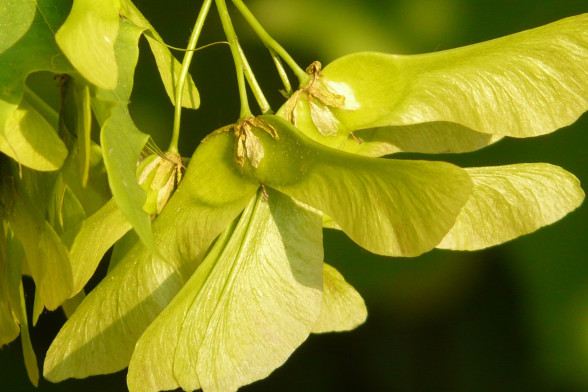
Norway Maple /Acer platanoides/
Norway maple belongs to the soapberry family and is commonly found throughout Latvia. It typically does not form pure stands and is present in fertile broadleaf forests, along riverbanks, and in ravines. Cultivated trees are also common in urban landscapes, often planted in avenues and parks.
Maple is an evergreen tree, reaching heights of 20-30 m. The bark has longitudinal stripes, ranging from dark brownish-gray to almost black. The crown is broad, spreading, dense, and roughly oval. The leaves are thin, uniformly colored on both sides, with a short fuzz on young leaves. The leaf blade is broadly heart-shaped or wedge-shaped at the base, with distant small teeth along the margin.
Young shoots are reddish-brown, shiny, and smooth. The yellowish-green flowers are arranged in multi-flower clusters on the sides of branches. Norway maple is a good nectar source. The winged fruits are smooth, with a wing width of up to 4 cm. The seeds are wingless.
It blooms during the leaf-flowering period, usually in May, and the fruits mature in September. Norway maple is a decorative tree, especially during flowering and late autumn when the leaves turn yellow and red. The wood is light, glossy, hard, and dense, commonly used in carpentry and for veneer. It is also utilized as firewood. In spring, the sap contains a considerable amount of sugar.
Interesting and important facts
Botanists consider the onset of sap movement in maple buds as the beginning of spring in the plant world.
Information sources: https://www.latvijasdaba.lv, Wikipedia
Photo: pixabay.com
